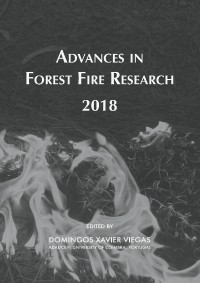Please use this identifier to cite or link to this item:
https://hdl.handle.net/10316.2/44648| Title: | The consideration of arson for forest fires caused by traditional uses of fire prohibited in Spain: a problem under discussion | Authors: | Martínez-Navarro, José Mª Vázquez-Varela, Carmen |
Keywords: | Arson;traditional uses of fire;Spanish General Statistics on Forest Fires (EGIF);harmonized classification scheme of EFFIS;Spain | Issue Date: | 2018 | Publisher: | Imprensa da Universidade de Coimbra | Journal: | http://hdl.handle.net/10316.2/44517 | Abstract: | In some southern European countries, and in particular in Spain, the custom, rooted in the paradigm of the exclusion of fire, of considering and classifying in official statistics as intentional forest fires all ignitions generated by prohibited agricultural uses related to the traditional culture of fire, is maintained. This custom generates, from our perspective, a series of problems that deserve to be considered before deciding whether or not to maintain this criterion in our official statistical information systems. These problems are, first of all, the lack of uniformity in the classification criteria for the European EFFIS database, which means that the results for the different Member States are not comparable, thus rendering the effort made to produce and maintain a common European statistic meaningless, as well as the possibilities for analysing the problem associated with EFFIS. Secondly, and already at the national level, this criterion distorts any rigorous analysis of the causes of ignitions, and without a rigorous initial analysis it is difficult to design effective prevention policies. Thirdly, the criterion, together with the sensationalist treatment of fires by the media, has created a monumental problem in public opinion, which does not understand what is happening, and which ends up generating a political problem. Politicians are struggling to lead this public opinion, and at present this is leading to an escalation of efforts in the police and judicial fight against a crime problem that does not really exist, to the detriment of real prevention policies based on Integrated Fire Management. It is precisely the latter that have been analysed in the European project FIREPARADOX and defended by the majority of experts and technicians today. Finally, the maintenance of this criterion is a clear disadvantage for the understanding by the non-expert public of the postulates of fire ecology, making the efforts that various organizations are beginning to make in this regard very complicated. In relation to the sources and methodology used in this research, we have analysed the criteria for classifying the causes of forest fires used in the database of the Spanish General Statistics on Forest Fires (EGIF) and their problematic adaptation to the harmonized classification scheme of fire causes in the EU adopted for the European Fire Database of EFFIS. Subsequently, we compared the results of the current classification of the Spanish General Statistics of Forest Fires (EGIF) with those of an adaptation of the same prepared using the harmonized classification scheme of EFFIS. Finally, we have compared the results obtained from the two classifications with the data published by the Attorney General's Office on the intentionality of forest fires in judicial investigations over the last decade. | URI: | https://hdl.handle.net/10316.2/44648 | ISBN: | 978-989-26-16-506 (PDF) | DOI: | 10.14195/978-989-26-16-506_131 | Rights: | open access |
| Appears in Collections: | Advances in forest fire research 2018 |
Files in This Item:
| File | Description | Size | Format | |
|---|---|---|---|---|
| the_consideration_of_arson_for_forest_fires.pdf | 959.34 kB | Adobe PDF |  |
Items in DSpace are protected by copyright, with all rights reserved, unless otherwise indicated.
